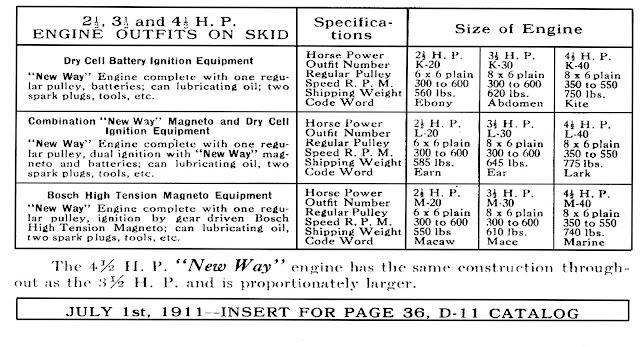New Way promoted quality and no doubt they had a reputation they wanted to promote and protect. Advertising was one way to promote a quality product by appealing to the logic of low maintance and benefits of the usage of quality consumables.
Consumables
 New Way branded consumables included spark plugs and dry cell batteries [see image- click to enlarge] promoted as using or being the best. Documentation as supplied to buyers were generally designated "Book of Instruction and Repair Price List". This provided the New Way Owner with a comprehensive list of available spares and prices in a tabulated format along with ordering requirements to ensure accurate supply.
New Way branded consumables included spark plugs and dry cell batteries [see image- click to enlarge] promoted as using or being the best. Documentation as supplied to buyers were generally designated "Book of Instruction and Repair Price List". This provided the New Way Owner with a comprehensive list of available spares and prices in a tabulated format along with ordering requirements to ensure accurate supply.Accessories
New Way specified accessories included
- Friction Clutch Pullies - A range was available dependant on the H.P of the motor
- Plain Pullies - A range was available dependant on the H.P of the motor
- Governor Pully (owner could set speed) - Customer defined shaft fitting to suit machinery.
- "New Way " Ammeter - Sold essentially as an ongoing cost saving measure for the testing of dry cells to eliminate the wastage of cells as used on many of the early model motors.





